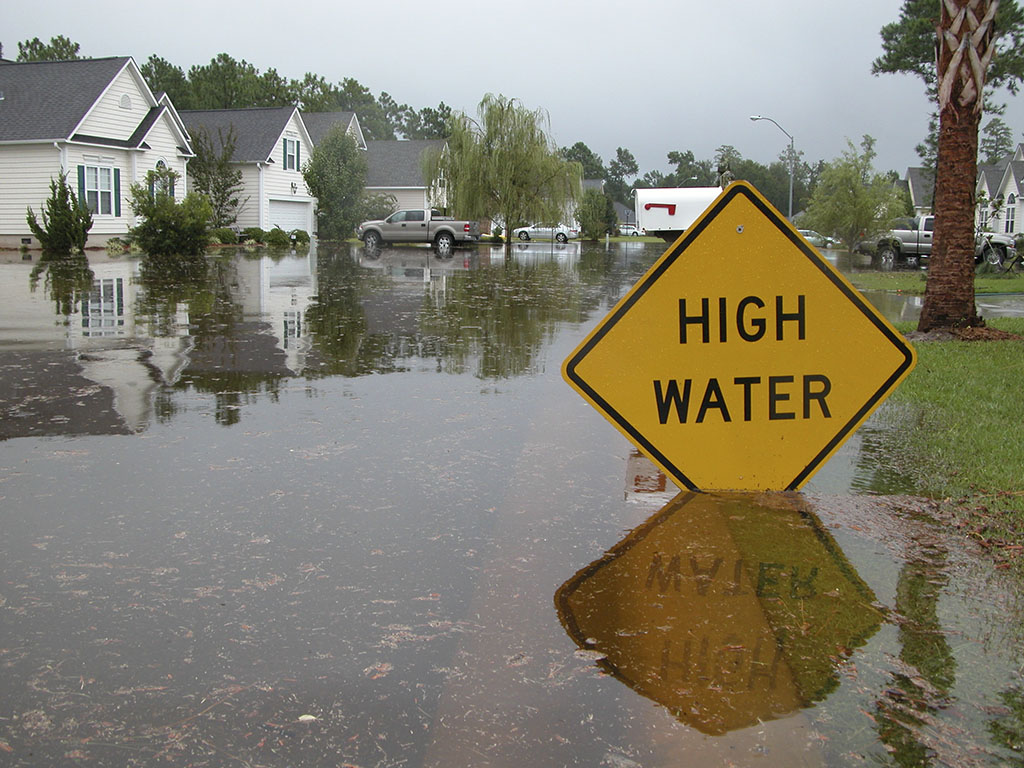People who live in flood zones in Southwest Florida have to think about more than simply weathering storms. Many people board up windows and place sandbags around their homes in an effort to keep floodwaters from encroaching and damaging their property. In addition to their personal property inside of their homes, homeowners who live in flood zones also have to worry about their HVAC units.

These units may become damaged in floods and need to be replaced. People should also be aware that many areas in the region have recently been rezoned as flood zones, making it important for people to move their HVAC systems above the design flood elevation to protect them in case a flood occurs.
How floods can damage HVAC units
While it is true that some HVAC components that are made out of steel or copper are made to withstand all types of water, the units may not be able to withstand flooding HVAC events that can happen in hurricanes and other natural events. Flooding HVAC systems can cause electrical components to short out in electric HVAC systems. The lowest electrical component is normally the component that will short out first in systems that are placed at or near the ground level. Gas units may not withstand floods at all. Most of these units have their gas burners and heat exchange located at the very base of them, which are what floodwaters can damage.
Protect HVAC units by moving them
Waterfront HVAC systems must be placed at elevations that are greater than the design flood elevation for the area in which the homes are located. It is common for homes in some flood zone regions of Florida to have their systems placed at heights of 18 feet or higher. If you live in an area that has recently been rezoned as a flood zone, it is important for you to relocate your existing HVAC system to a higher elevation. This may take work to reroute the electrical wiring and the ductwork since all of it must be placed above the design flood elevation level. In addition to moving your HVAC system to a higher level such as your attic, there are a couple of other methods that you might be able to use if moving the system is not feasible.
Building a wall
If your home simply doesn’t have enough room to relocate your waterfront HVAC unit, you might be able to protect it from flood waters by building a wall to enclose it. An experienced contractor can design a walled enclosure for your HVAC unit that can protect it from floodwaters. Its height will depend on the 100-year flood level of the area in which you live, and it should be built with an access point and enough room inside for regular service and maintenance to be performed.
When you should move your HVAC
HVAC units are expensive, and waiting until they have already been damaged by a flood is not a good idea. You should instead move your HVAC unit before a flood happens. Since moving it will take substantial work in relocating the wiring, drainage pipes and ductwork, it might be a smart idea to relocate your HVAC unit at the same time that you purchase a new system. Buying a new HVAC system can also help you to save money on your utility bills if your existing system is an older model because of the greater energy efficiency ratings of modern HVAC systems.
Get help from the experts at Mahle Cool Air & Heating
The best time to prepare for flooding is before it occurs. In addition to making certain that you understand what your flood insurance will cover, you should also try to minimize your potential losses through planning. It is a good idea to get help from the professionals at Mahle Cool Air & Heating to relocate your existing HVAC unit or to locate a new unit in a manner that can help it to withstand floods.
To learn more, contact us today to speak with one of our HVAC professionals. Call or Text (941) 203-7955